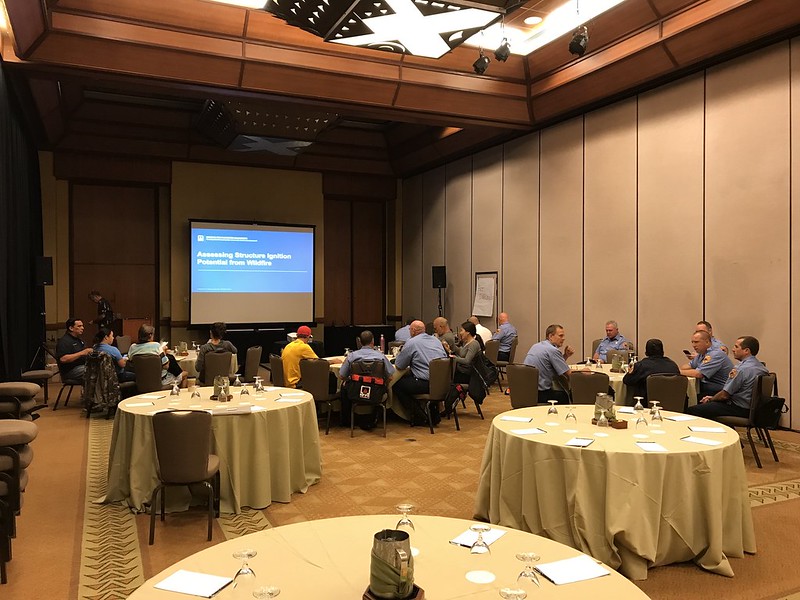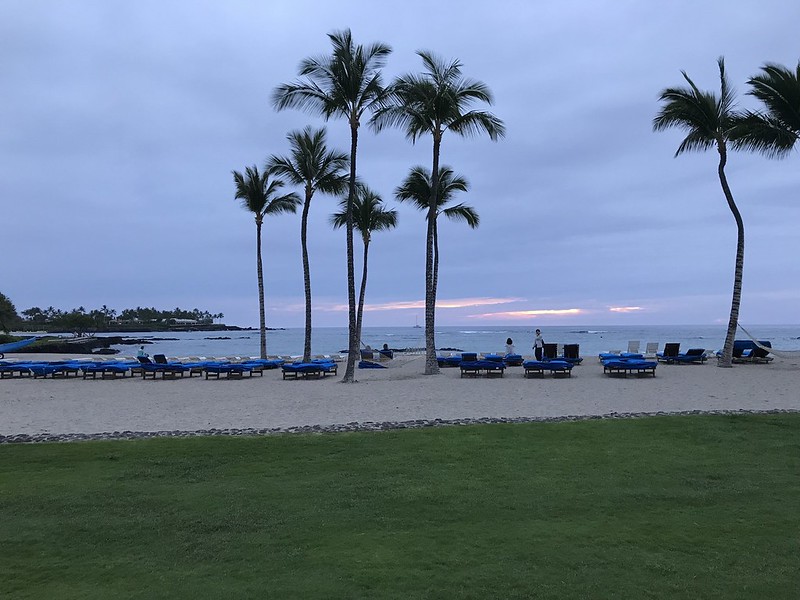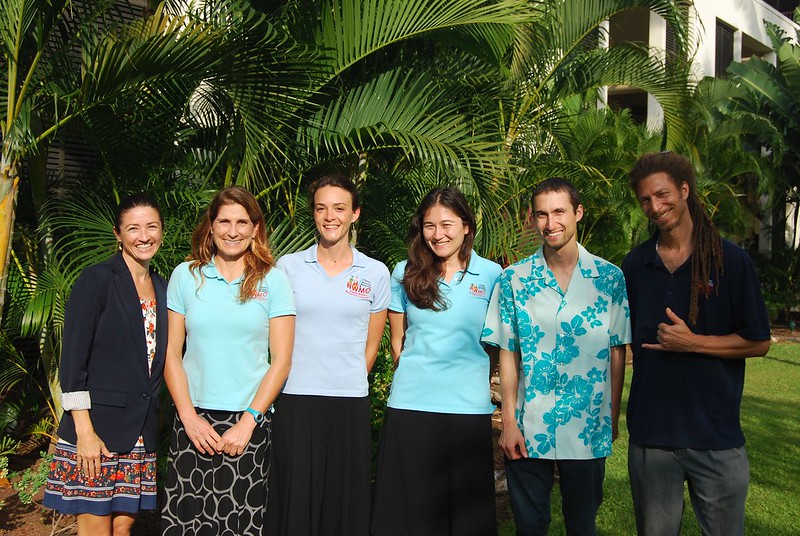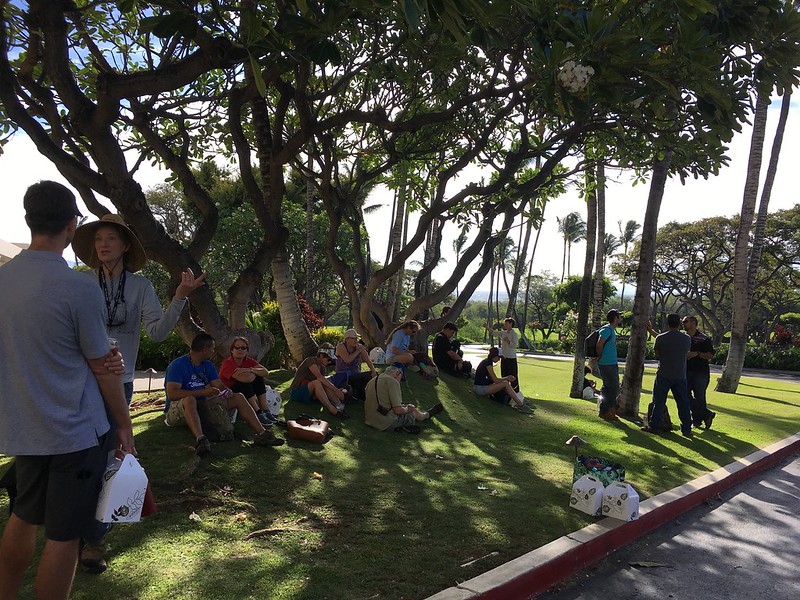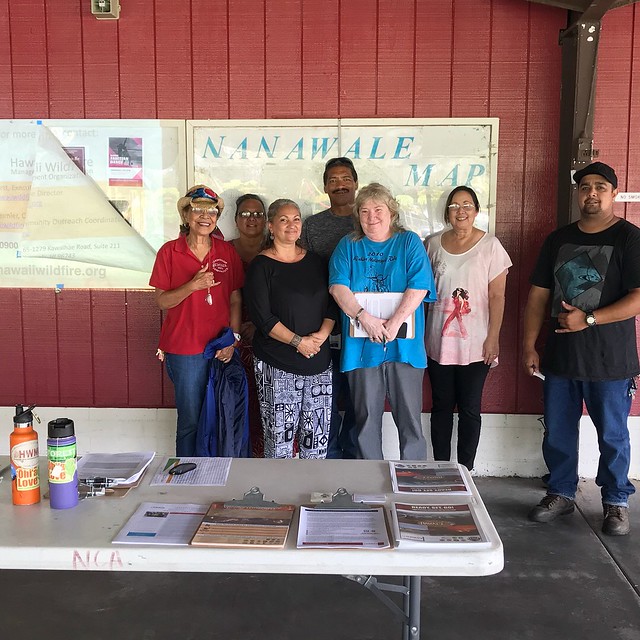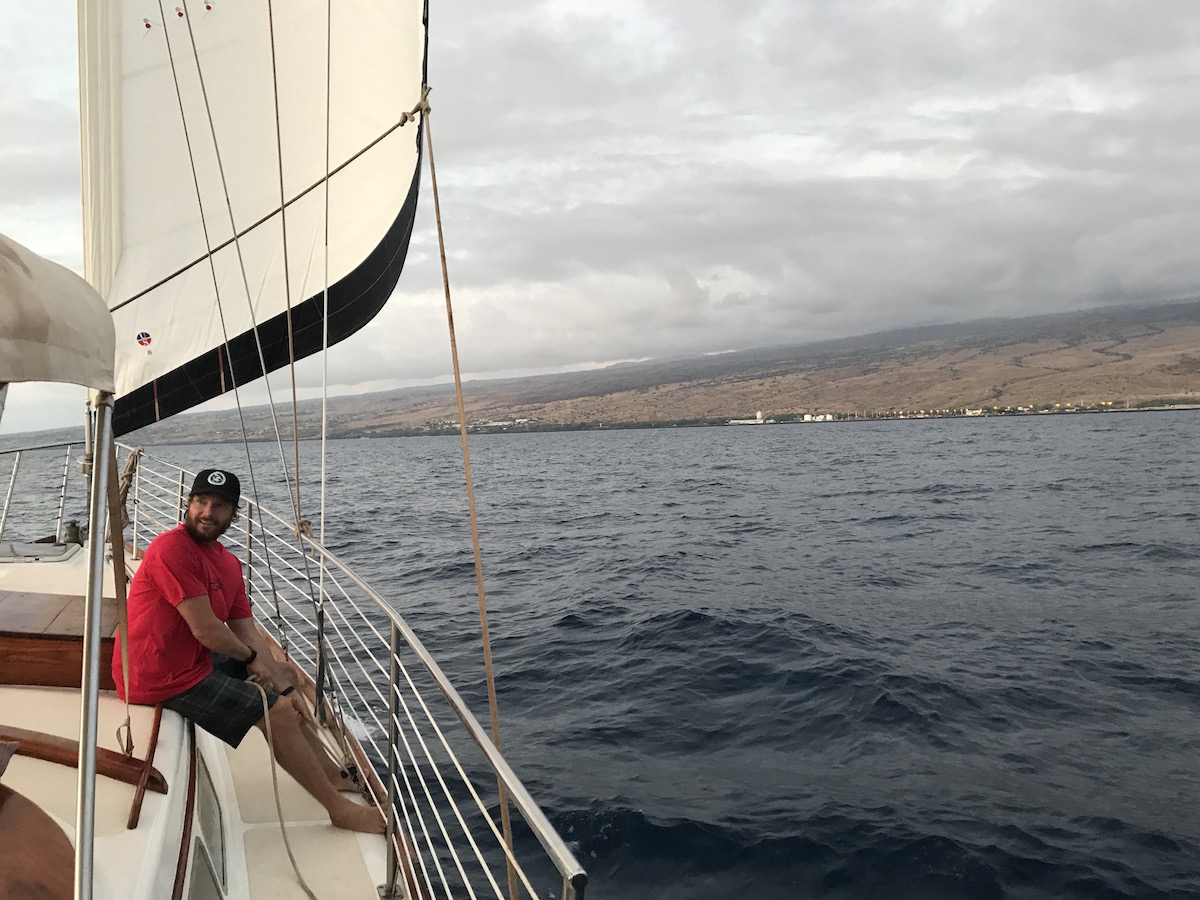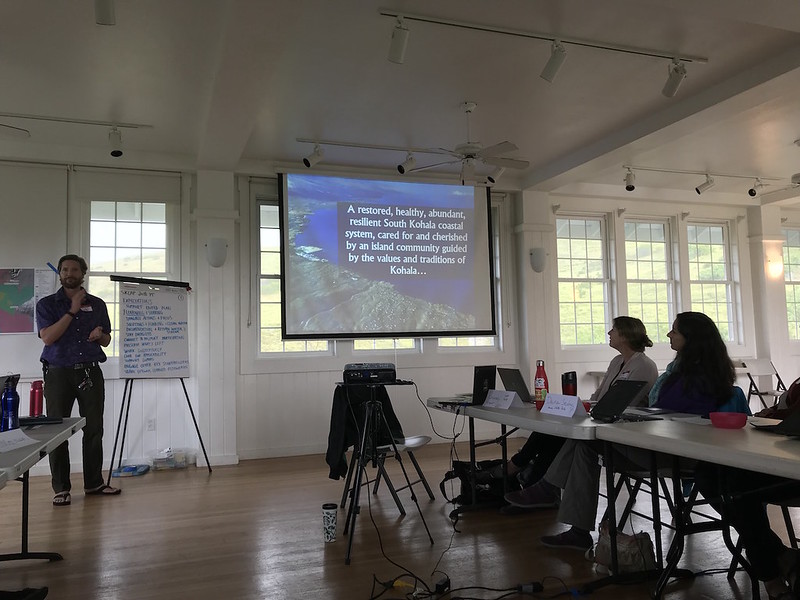The terrain of this beautiful landscape is rough, and varies from a vast lava fields covered in dry fountain grass, to dense forests that are interspersed in and around the community. The steep gullies and hills that surround the community make it a landscape that is immediately intriguing, and definitely a challenge when it comes to fire-suppression. The Puʻu Anahulu Community on Hawaiʻi Island is located on the upper road between Waimea and Kona. They participated in their Firewise Hazard Assessment on October 16, 2019, and their wealth of knowledge about the area and it’s history fire was clear during the assessment.
Stop #4, the Historic Puʻu Anahulu Baptist Church
The hazard assessment was extremely educational for the community as they worked with professionals from Hawaii Fire Department, Division of Forestry and Wildlife, the National Parks Service, the US Army Fire and Emergency Services, and Hawaii Wildfire Management Organization. As one unit, we went around the community to pre-planned areas where we could see the wildfire risk-potential, and understand what would happen in the case of a wildfire. “The majority of the work that saves a home during a wildfire is done long before a wildfire threatens a property” added Chief Moller, the US Army Fire Fire Chief. “This is an isolated community so it takes resources and extra time to get here. If the community is working to manage their own (fire risk), It will help the partnership for all of us”, said Chief Darwin Okinaka. “the bottom line is that we won’t put any personnel in danger to save a house. If the opportunity is there to save a house we will do it, but if the risk is too great, we may not be able to.”
Wanda Rowan, Puʻu Anahulu Resident sharing her knowledge of wildfire in the area.
This points to the fact that the real reason households within a community can stay safe during a wildfire is because of the work that has been done to not only create defensible space for fire personnel to safely defend a structure, but to ensure that the structure itself, and the vegetation immediately surrounding will not combust in the case of a nearby fire. With the prevalence of wildfires in Hawaii growing by over 400% since the 1960s, it is vital that homeowners take necessary precautions in case a wildfire does approach. Embers can be a very sneaky intruders through vents, igniting the flammable interiors of homes, yet can be stopped by 1/8th inch stainless steel mesh screening. The vegetation around a house also can be thought of as the potential kindling of a campfire. If there are dry branches, leaves, and twigs right underneath/next to the larger combustible material, it will allow the campfire log (or in this case, the side of a home) to become hot enough to combust, creating a structure fire. Simple firewise landscaping and building techniques can help a home withstand a wildfire, even if it comes within close proximity of the building.
Volunteer Fire Department personnel Steven Hyde speaks with the group at the northern boundary of the community.
While there are many different reasons why the Puʻu Anahulu community could become threatened in the case of wildfire, the first step to increase the communityʻs safety is to identify what exactly the hazards are that they are going to address. Once the hazard are addressed, then action to address those hazards should be a priority to help the families throughout the community protect the homes from fire. “(I am) Optimistic; the the greatest journeys start with the first step, and I think that is what we’re on; the first step. It will take many steps before we are able to get to our goal, but together, it will be a great journey” Concluded Chief Moller.
HWMO would like to extend a sincere thank-you to all of the safety personnel that came to participate in the Community Hazard Assessment yesterday; it was their experience fighting wildfire that made it possible for us to accurately identify the risks of the area. Also, a big mahalo to the Puʻu Anahulu community members that are putting in the effort necessary to keep their community prepared for wildfire.

















